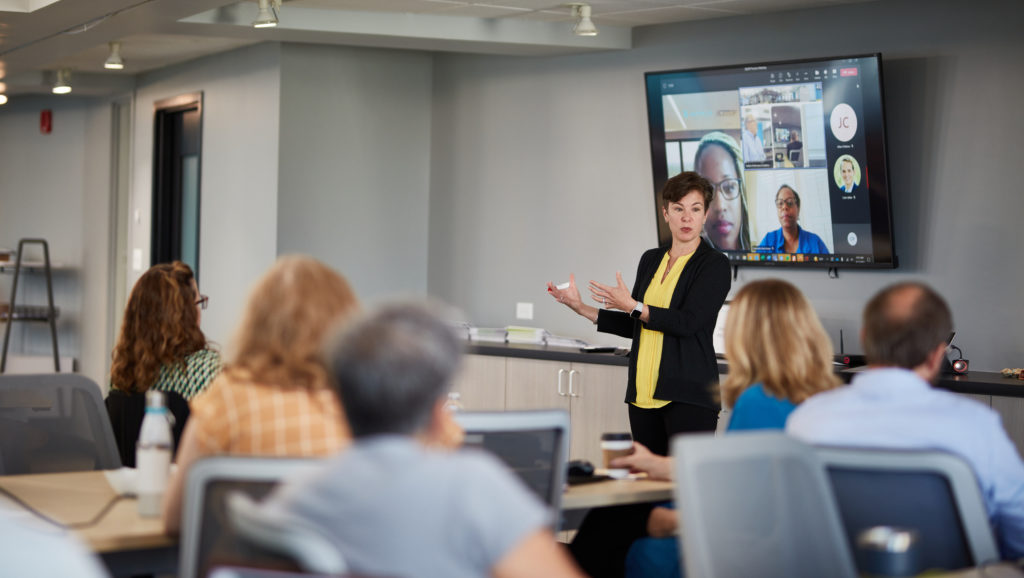Raftelis has worked with local governments and utilities across the country to help build continuous improvement programs. Working hand in hand with our clients, we have uncovered a few common lessons that may be helpful to your organization if continuous improvement is on your mind.
When we talk about building a “culture of continuous improvement” it’s easy to overlook that our public sector organizations have practiced this work for years, just by a different name. Managers and employees are always looking for opportunities to streamline their processes and make their work easier to complete. Whether it’s reorganizing a toolbox, converting paper processes to electronic, or connecting technology solutions to minimize non-productive drive time in the field, every organization is full of examples of employees making their organizations stronger. Start with those stories of success. Frame your program development efforts as an effort to build upon that great work to make the organization even stronger.
Continuous improvement programs often start as a “big idea” at the executive or governing body level of an organization, either through strategic planning efforts or as a visionary edict from on high. Staff then scramble to figure out what exactly the concept means and how to get it done. More often than not, this strategic goal is framed as a new list of projects, a new mandatory training program, and an aggressive implementation timeline that stacks additional work on top of existing aggressive implementation timelines and a 20% vacancy rate. This creates fear, not excitement. It is critical to start with a clear and honest understanding of the organization’s capacity to absorb this new work. Target your program development efforts around the concept of adding value and creating space for the organization to breathe. This can be accomplished by initially focusing on completing rapid improvement projects that create quick and tangible value to employees and by committing to contracted capacity for those large-scale process improvement projects that are important, but difficult for the organization to execute within those capacity constraints.
When building a continuous improvement program, local governments often start by hiring someone with a ream of certifications like LEAN and Six Sigma, and all sorts of colorful belts on their wall. Though the nomenclature is a bit funny (let’s be honest), this background and these skill sets are tremendously valuable to organizations. But they are only half of the ingredients necessary to develop a successful continuous improvement program. That expertise has to be connected to the expertise of existing staff. Engineers, planners, purchasing agents, finance professionals, operations superintendents, fleet managers, all carry the knowledge of what works, what doesn’t, and why, within their sphere of responsibility. Some organizations try to force the concepts of continuous improvement into the organization and this creates defensiveness: “Who is this person to tell me how to do my job?” Build process improvement expertise, but also tap into the knowledge and expertise of staff. Honor it. The organization needs to feel like you are doing something with them, not to them.
Denver Metro Water Recovery has worked over the past several years to build an internal continuous improvement program. Over that time, the organization has developed both awareness and respect for the value of continuous improvement. This cultural evolution has less to do with specific project outcomes (though there are plenty) and more to do with project approach. Continuous improvement program staff engage with others in a collaborative and respectful way, reflecting a strategic partnership that emphasizes the power and importance of each employee’s perspective. This approach builds relationships, breaks down silos, and solves organizational challenges.

When embarking upon a continuous improvement journey, it is tempting to push the peddle to the floor and run hot. Some organizations will have the capacity to absorb this intensity, many will not (see Lesson 2). Like a house, the foundation must be laid before the walls can be built and the roof assembled. Our most successful clients focus on providing support to staff, slowly building internal capacity, generating quick wins, and demonstrating real and tangible value to those employees who engage in process improvement projects. This creates energy and interest in the program and often results in individuals throughout the organization wanting to develop their own process improvement skill sets to drive efforts in their program areas. This is a force multiplier, creating exponential value to the organization. This thoughtful, methodological approach builds culture rather than diminishes it.
For continuous improvement to be successful, it has to be communicated as a value and expectation from the highest levels of the organization, and it needs to be supported from there. Most continuous improvement programs are led by those who have responsibility but not authority, meaning, people who are asked to drive program success don’t have the hierarchical authority to compel movement in the rustier gears of the organization. Success hinges on consistent communication from executive leadership on the value and the importance of the work. You can’t overcommunicate. In fact, it’s likely that by the time you are sick and tired of communicating the value of the program, you are probably just being heard for the first time.
Over the past several years, Raftelis has helped the City of Charleston build a dynamic and successful continuous improvement program. One of the primary reasons the program has been successful is due to the championship of Mayor John Tecklenburg. Mayor Tecklenburg conceived of the program, has actively built it into a cultural characteristic, and is the first to cheer on the City’s team and tout their success. This kind of leadership matters.
In the end, there is no single right way to build a continuous improvement program. There are many approaches and many timelines that organizations have used to build this focus. Your approach must reflect your organization’s unique culture, capacity, and strategic goals. But if done well, with sustained intention, the effort can energize and transform your organization and the communities you serve.